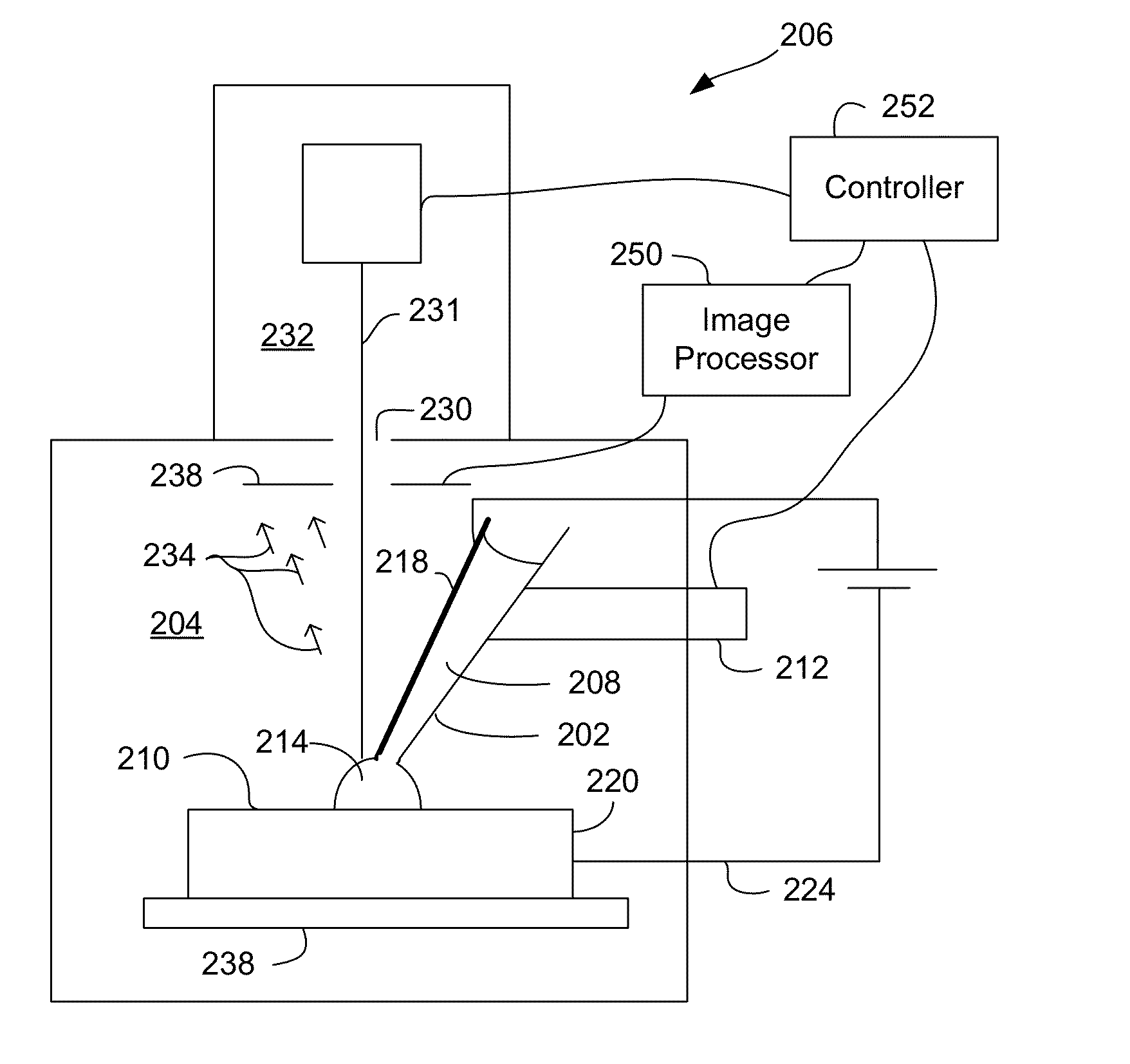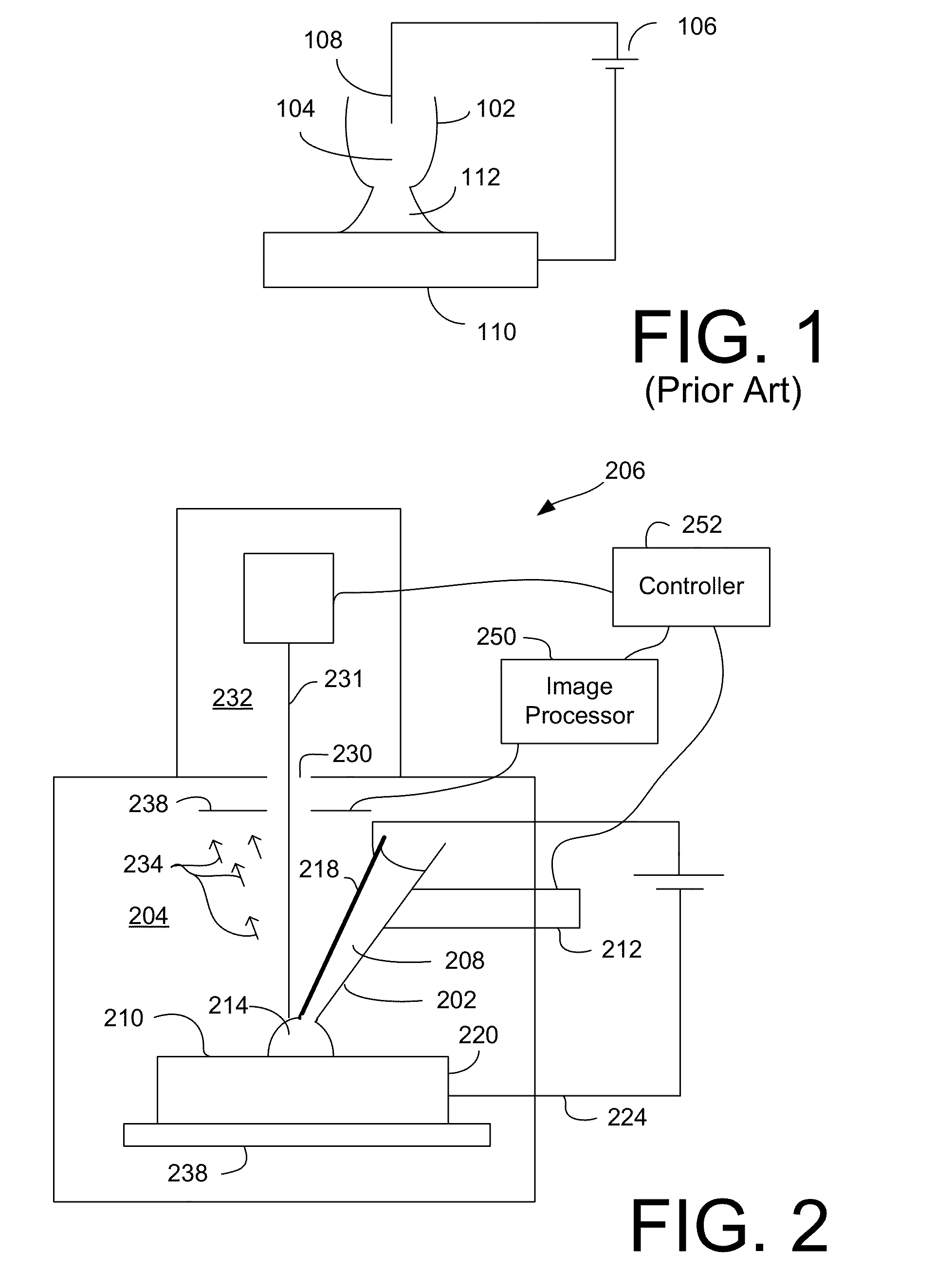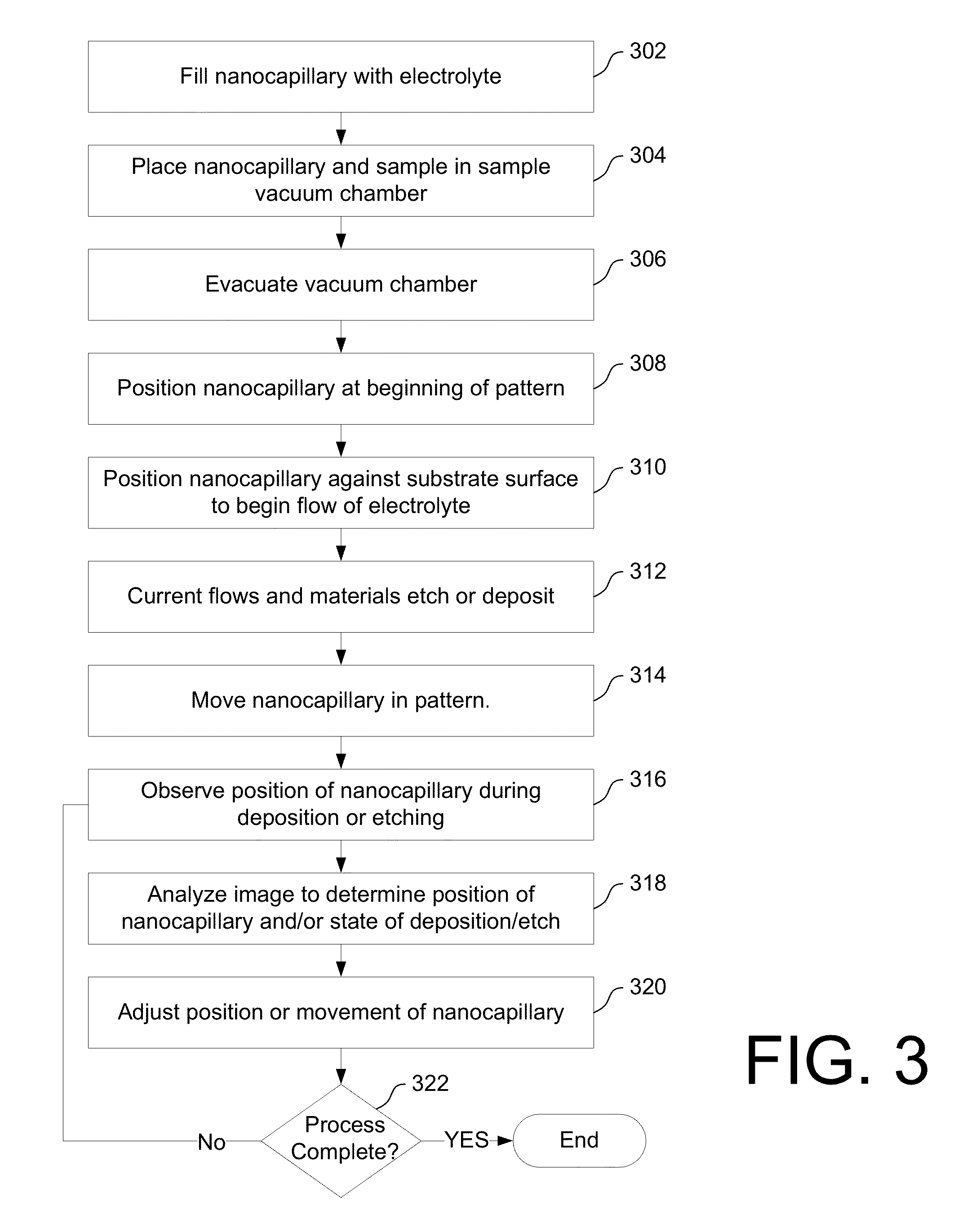Localized, in-vacuum modification of small structures
The localized charge transfer mechanism using a nano pen and nanocapillary for high purity metal deposition addresses the inefficiencies in existing nanoscopic device modification techniques, achieving low resistivity and precise control, especially on insulating surfaces.
- Summary
- Abstract
- Description
- Claims
- Application Information
AI Technical Summary
Benefits of technology
Problems solved by technology
Method used
Image
Examples
Embodiment Construction
[0039]In a preferred embodiment, the present invention provides a means to directly deposit or etch conductive material onto a substrate. A nano pen dispenses an electrolyte and an electric current through the electrolyte electrochemically deposits material onto the surface or etches material from the surface. A “nano pen,” as used herein, comprises a device that dispenses small quantities of liquid to “write” or “etch” upon a substrate as the pen moves relative to the surface. Nano pens can comprise, for example, nanocapillaries, nano syringes, nanopipettes, etc.
[0040]Some embodiments of the invention can be used to deposit metals that are substantially pure. Because the metals are pure, they can have resistivities that are forty or more times lower than the resistivities of existing FIB-induced deposition of tungsten and platinum materials, and ten times lower than the resistivity of FIB-induced deposition of copper conductive materials. The resistivities are comparable to those o...
PUM
| Property | Measurement | Unit |
|---|---|---|
| diameters | aaaaa | aaaaa |
| pressure | aaaaa | aaaaa |
| pressures | aaaaa | aaaaa |
Abstract
Description
Claims
Application Information
 Login to View More
Login to View More - R&D
- Intellectual Property
- Life Sciences
- Materials
- Tech Scout
- Unparalleled Data Quality
- Higher Quality Content
- 60% Fewer Hallucinations
Browse by: Latest US Patents, China's latest patents, Technical Efficacy Thesaurus, Application Domain, Technology Topic, Popular Technical Reports.
© 2025 PatSnap. All rights reserved.Legal|Privacy policy|Modern Slavery Act Transparency Statement|Sitemap|About US| Contact US: help@patsnap.com



